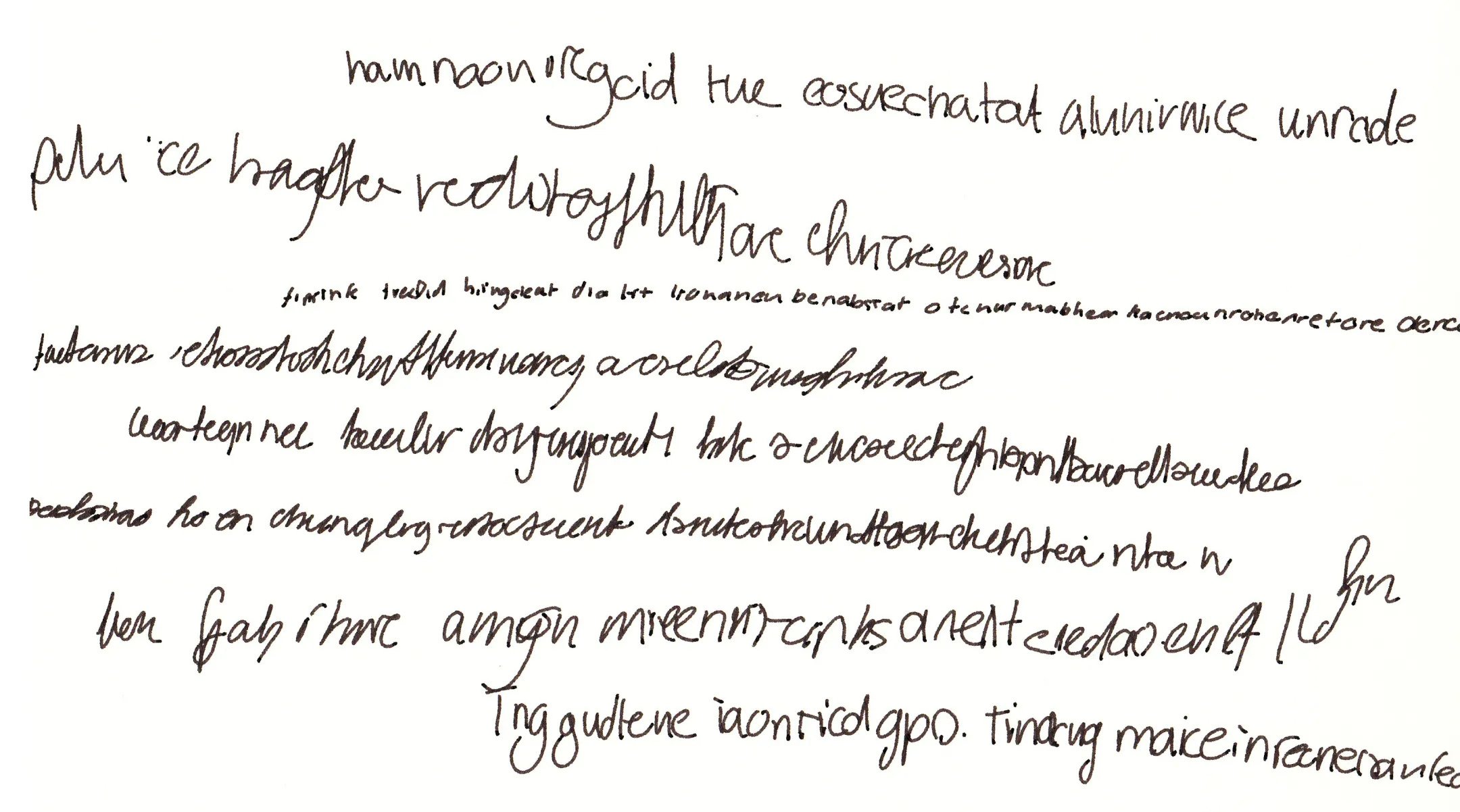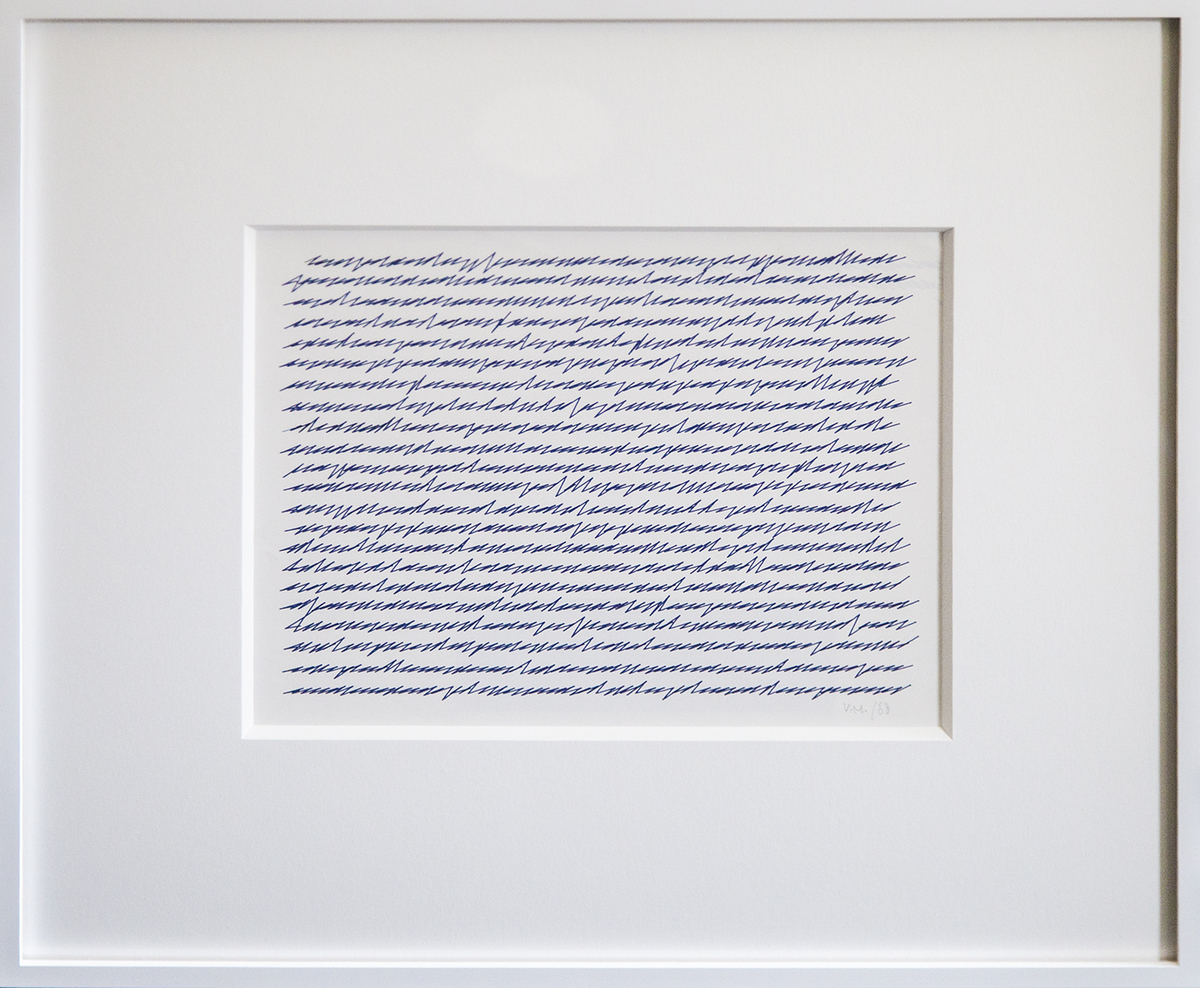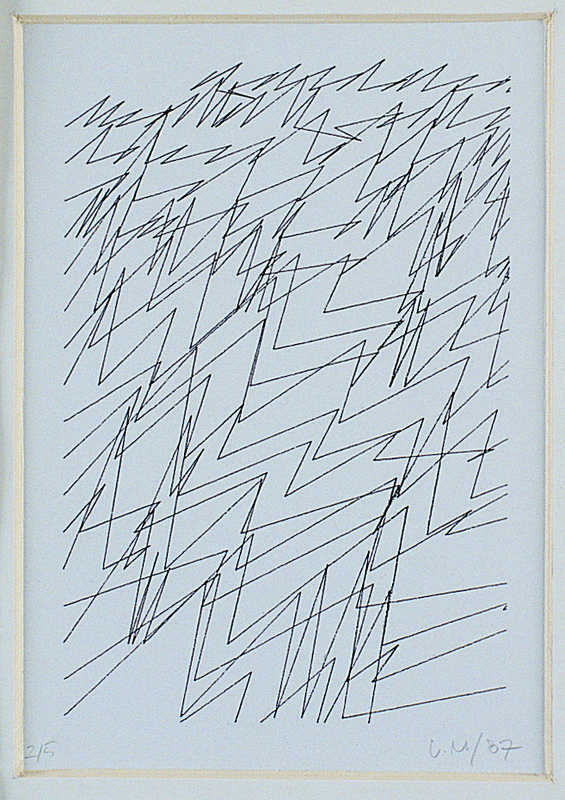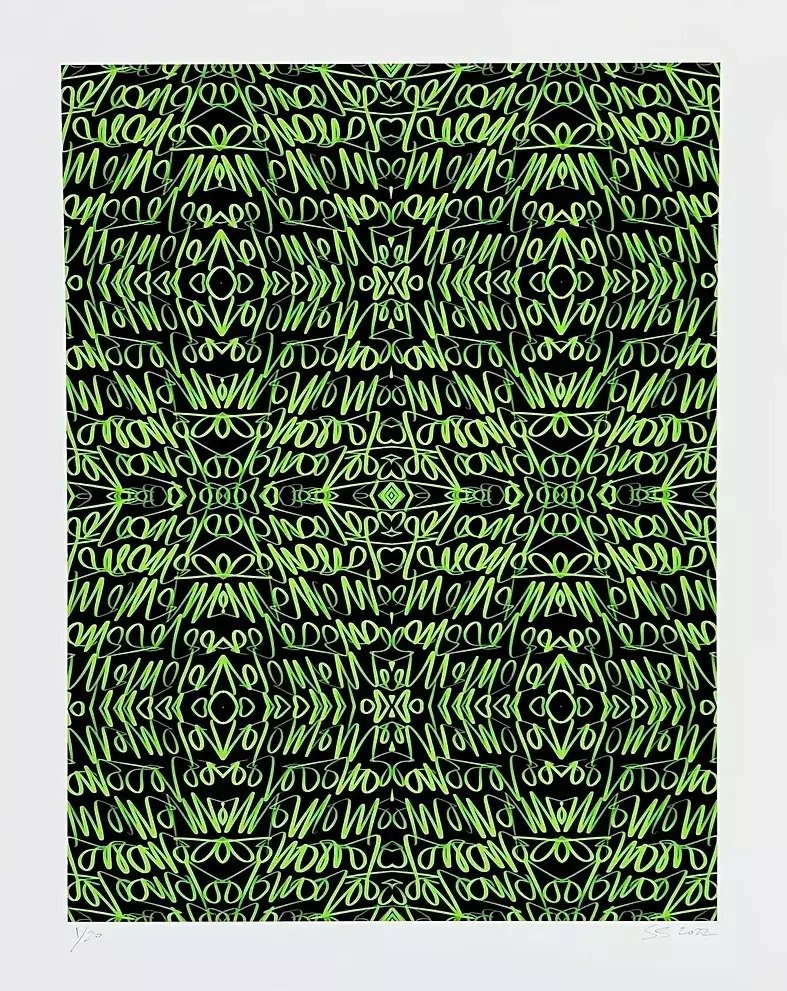True Religion
To sell spirituality as a lifestyle brand, Timur Si-Qin draws on wellness culture, crypto, and other ways to find meaning when old values fall short.

We’ve all been there—excitedly opening a hand-addressed envelope, a rare treat in the twenty-first century, only to realize it’s not a letter from an old friend, but a reminder from the dentist or a plea from our college alumni association. In some cases, this is more than just a typeface that looks like handwriting: machine-generated handwriting has been used as a direct-mail marketing trick since at least the early 2010s, proven to lure more recipients into opening the mailers by faking that personal touch. A Virginia-based company called RST Marketing developed a machine called Real Pen that “replicate[s] the appearance of real handwriting” using a pen plotter—an automated machine that “writes” or “draws” with a ballpoint pen held by a mechanical arm.
Sometimes referred to as a drawing machine, the plotter is the same tool used since the late 1950s to output computer graphics, from architectural blueprints to large-format maps, to paper. Plotters have become a mainstay in the work of early generative artists including Georg Nees, Manfred Mohr, and Vera Molnar, as well as recent practitioners such as Iskra Velitchkova and Tyler Hobbs, who often combine the tool with rapidly developing AI technology. Like with Real Pen, artists have also used the plotters to mimic the appearance of human handwriting.
There’s something uncanny about fake handwriting, like when you realize that a photo of a person is an AI-generated face.
There’s something uncanny about fake handwriting, like when you realize that a photo of a person isn’t real, but an AI-generated face, or when the best man gives a wedding toast, then reveals his speech was written with ChatGPT. It’s the trickery, the artificial replication of something that is so uniquely human. But in the hands of artists experimenting with different approaches to automation, artificial handwriting takes on a different character. By defamiliarizing handwriting through automation, such artworks illustrate the ongoing entanglement of humans and machines.

Vera Molnar’s Lettres de ma mère (1981–91) is a series the artist has described as a “simulation” of her late mother’s handwriting using a computer program. As my own media-archaeological research has shown, Molnar, an abstract painter, deconstructed her mother’s gothic script into repeatable geometric elements—line segments that could be programmed to resemble cursive. With the help of collaborators (she has never pretended to be a programming expert), Molnar created a computer program called Anyam—Hungarian for “my mother.” She hooked up the computer to a plotter equipped with a blue pen—like the one her mother used—to generate dozens of handwritten “letters.” Molnar’s Calcomp 81 plotter was not much different from Real Pen, aside from its left-to-right pen movement, which more closely mimics the human gesture of writing cursive (Real Pen, meanwhile, moves from right to left, snaking up the page).

Unlike Real Pen’s pseudo-handwriting, Molnar’s has no discernible characters, only a set of continuous lines that zigzag across the page in a series of sharp peaks. With the help of a pseudo-random number generator algorithm, Molnar mimicked the inconsistency of the human hand, with some peaks rising higher than others, the lines growing more and more unruly as the letter went on. Her compositions look like handwritten letters, but in fact say nothing at all. The handwriting is not only artificial, but also completely asemic. Asemic writing operates by what literary scholar Peter Schwenger, in his 2019 book Asemic, calls “a kind of cognitive dissonance: writing is evoked at the same time that we are estranged from it.” It is, simply put, writing without language. It probes the relationship between text and image, between reading and looking, between writing and drawing.
By instructing a robotic arm to execute her drawings, Molnar further thwarts any psychological reading of the “handwriting,” the kind suggested by Roland Barthes when he stated that “the hand seems plugged directly into the mental.” With the hand displaced, any link between the mark and the unconscious of its maker is short-circuited. Though her title invokes the incredibly personal, Lettres de ma mère withholds any intimate details. Molnar insists that translating her mother’s script into quantifiable geometric forms was merely about discovering forms and compositions in the everyday, although it is hard to ignore that she made these works just before the fall of the Soviet Union, which had subjected their correspondence across the Iron Curtain, between Budapest and Paris, to scrutiny and censorship. As we trace the rhythmic up-and-down of the plotter pen, working its way across the page, not stopping to cross its “t”s or dot its “i”s, we are left only to imagine what the letters might have said. Molnar pulls us close only to push us away, as if to say, mind your own business. With her sly, subtle humor, she pokes fun at the pseudoscience of graphology as well as the perceived threat of the computer to human intelligence and creativity.
With the hand displaced, any link between the mark and the unconscious of its maker is short-circuited.
Technology has come a long way since Lettres de ma mère. Nearly half a century later, the artist and MIT-trained roboticist Alexander Reben created Synthetic Penmanship (2017), in which he models handwriting from real-world samples using deep learning, and then uses this model to “robotically” generate new handwriting using, again, a pen plotter. For Reben, per his website bio, art is a way to explore “the inherently human nature of the artificial.” No two specimens of Synthetic Penmanship—which can be purchased as prints—are alike, providing a sense of real human idiosyncrasy.
Upon closer inspection, however, the viewer will notice that Reben’s handwriting is also asemic—a random assortment of letters that look like words, but hold no semantic meaning. Still, like Molnar’s letters, they beckon us closer. There is a sense of familiarity in their imperfection: in the unpredictably sloping lines, the unevenness of the heights and widths of the characters. Without conveying a coherent message, Reben’s robot fakes that personal touch even more convincingly than Real Pen. Despite the coldness of his machinery, there is a warmth to his programmed gibberish.
With Cursive Binary (2020–), poet, artist, and AI researcher Sasha Stiles explores a different kind of illegibility: the human inability to comprehend binary code, the language of zeros and ones used by digital computers. While Molnar and Reben cede their mark-making to the machinic pulse of the plotter, Stiles’s hand is very much present in her canvases, which were shown at Annka Kultys Gallery in London earlier this year. In white chalk reminiscent of the oft-cited asemic artist Cy Twombly, Stiles scrawls strings of zeroes and ones from left to right, connecting the numbers with loops and flourishes that emphasize the similarity between the Arabic numerals 1 and 0 and the Latin letters O and l. While Cogito ergo sumthing and I’m data’s girl invoke the semi-cursive handwriting style we call “print,” her marks get looser with works like Do you understand? (all 2021). When the binary is written in wet ink on watercolor paper, as in My brain has crawled halfway to my heart and Are you ready for the future? (both 2020), the brush hardly lifts at all, the zeroes and ones transforming into Ns and Ms, reading something like ooooonoooomoou olooonomononoooolol–– keyboard smashing rendered in scribbles.

Most recently, Stiles too has turned to the plotter, programming her AI “alter ego” Technelegy to write Cursive Binary. Treating her texts like images, she then transforms them further, using digital design tools that, in the words of the artist, allow her to “cut, splice, transpose, duplicate, shrink, enlarge, and collage these handwritten code poems into new patterns, rendering them at least partially indecipherable.” What results are “semi-asemic” visual poems, their acid green lines kaleidoscopically glowing against a black background, as if bursting from a programming environment. Viewed alongside Molnar’s Lettres, they remind us that the twenty-first-century programmer’s green-on-black text is, in fact, designed to mimic early monochrome CRT screens like the one Molnar used. For Stiles, the question of “human or machine?”is irrelevant. Can we even remember a time without each other?
In the hands of artists, the writing of computers doesn’t taunt or fool us. Nor does it try to convey any specific message—more often than not, it is illegible. Handwriting without language, created with computers or borrowing from their systems, exists somewhere between the manual and the machine-made. It is both familiar and mysterious. It challenges the boundaries we draw between the natural and the artificial. It’s no coincidence that Molnar, Reben, and Stiles are all drawn to fundamental questions about the relationship between humans and technologies, and, as Stiles puts it, “what it means to be human in an increasingly posthuman era.” Molnar, already in 1989, suggested that it was the computer, that “so-called inhuman machine,” that would help artists “realize what is most subjective, what is most profound in man.”
Computers and AI cannot, and will probably never be able to, simulate, replicate, or mimic the most profoundly human gestures—crafting a poem, spilling motherly love onto stationery, smearing a letter with a teardrop, wincing from a paper cut, or rolling our eyes at junk mail. The sweeps and loops of these artists’ generative scribbles remind us that, despite being told we have all the information in the world at our fingertips, we will never be able to read it all. It’s a humbling reminder that not one of us, neither human nor machine, will ever know everything.
Zsofi Valyi-Nagy is an artist and postdoctoral fellow in residence at the Getty Research Institute.
